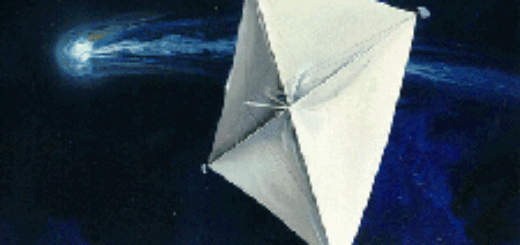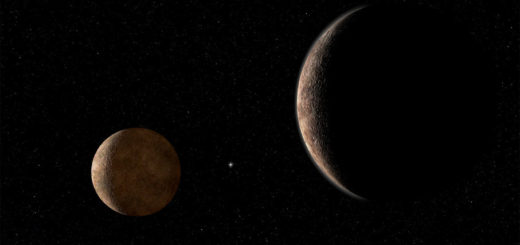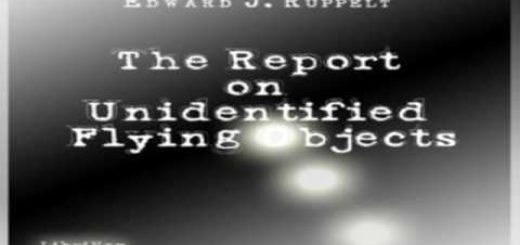Secret Underground Tunnels Past & Present Lost Cities & Bottomless Pits

Myths and stories of an “underworld” are the oldest and most persistent memories of man and have passed from culture to culture since recorder time began.
Many describe it as a paradise. Others … a fire filled hell and the home of monsters and devils whose sole aim is to torment, and finally conquer mankind. A good study of this aspect of the hollow earth story isSubterranean Worlds (1989) by Walter Kafton-Minkel. While Mr. Kafton-Minkel leaves no doubt that he is a total skeptic when it comes to the reality of the subterranean worlds, he has written a well documented, easy to read overview of the whole subterranean/hollow world subject from ancient times to the present.
The subtitle of the whole hollow earth subject of his informative book tells it all:
“100,000 years of dragons, dwarfs, the dead, lost races & UFO’s from inside of the earth.”
I recommend it to anyone who would like to read a one-volume history for man’s search for the truth about this intriguing subject. Just keep in mind that this book was written from the establishment viewpoint … however, the author is to be commended for not letting this get in the way of excellent reporting.
Our quest, however, does not lead us in the direction of myths. Hard evidence is what we seek. The research I am currently working on (1990) points toward some exciting possibilities.
Harold T. Wilkins in his 1956 pre-history study Mysteries of Ancient South America presents the case of a civilization centered in Central and South America that existed long before the ancient civilizations of Akkad, Sumer and Egypt. In fact beginning with a “bearded white race of highly civilized people” in the Brazilian Highlands Mr. Wilkins provides the evidence that proves:
“Tropical South America including as it does, the most ancient land in the world never submerged by the ocean, and never ground under the tremendous glaciers of the Ice Ages, may very well have been the cradle of the earth’s civilization, from which it spread outwards to Europe and Africa on the one side and Asia on the other.”
He puts forth the theory, these “bearded white men”, came from Atlantis. However, some of his evidence points in another direction … down into the earth.
In 1939 Mr. Wilkins obtained a transcript of a manuscript written in 1753 by a treasure hunter in Brazil. It tells of the “lust for gold” sending them deeper and deeper into the Brazilian wilderness and the discovery, after much hardship,
of a “great city of ancient date, without inhabitants, that was discovered in the year 1753.”
Here are excerpts of the narration that pertains to our quest:
“We went into the strange city, and we came on a road (street: rua) of great length. And a well set-out plaza (una plaza regular), besides, in it, and in the middle of the plaza a column of black stone of extraordinary grandeur, on whose summit was a statue of a man (homo ordinaria: not a god, or demi-god) with a hand on his left hip and Right arm out-stretched, pointing with the index finger to the north pole…”
(page 43).
“…opposite this plaza there runs very swiftly, a most deep (caudaloso) and wide river, with spacious banks, that were very pleasing to the eye…
“Three days we journeyed down the river, and we stumbled on a cataract (una catadupa) of such roaring noise and commotion of foaming water that we supposed the mouths of the most talked about Nile could not have made more trouble or booming or offered more resistance to our further progress… on the eastern side of this cataract, we found various subterranean hollows (subcavoes) and frightful holes, and made trial of their depths with ropes; but after many attempts we were never able to plum their depths.”(Pages 44-45).
This story is very similar to the lure that led to the disappearance of Col. Percy Harrison Fawcett, last of the great explorers, along with his son Jack and their companion Raleigh Rimell in the still-unexplored jungles of Brazil in 1925.
Lost Trails, Lost Cities (1953) is a collection of Col. Fawcett’s manuscripts, letters and other records selected and arranged by his son, Brian Fawcett.
Col. Fawcett wrote:
“…the story begins in 1743, when a native of Minas GeradisM, whose name has not been preserved, decided to make a search for the lost mines of Muribeca.”
(Page 5).
[Note the 10 years difference in the two stories].
Just as in the story told by Mr. Wilkins, a group of treasure hunters go through living hell until they come upon a mysterious abandoned city of colossal stone hidden away in the steaming jungle. Col. Faucett tells how the group entered the silent city:
“Huddled together like a flock of frightened sheep, the men proceeded down the street and came to a vast square. Here in the center was a huge column of black stone, and upon it the effigy of a man in perfect preservation, with one hand on his hip and the other pointing north.
(Page 9)
It’s obvious that Col. Fawcett and Mr. Wilkins are reporting on the same city from the same manuscript. However it should be noted that Col. Fawcett in telling of another “lost city” stated:
“It too was distinguished by the remains of a statue of a great black pedestal in the middle of a square.”
(Page 13).
You can’t help but wonder … was this statue also pointing towards the north? As Col. Fawcett continues his narration, his group is also following a river:
“…fifty miles down (river) they came to a mighty waterfall, and in an adjoining cliff face were found distinct signs of mine workings.
(Page 11).
“Investigation proved the suspected mind shafts to be holes they had no means of exploring, but at the mouths lay scattered about a quality of rich silver ore.”
(Page 12).
This information leads one to the conclusion that it’s obvious these “holes”, so deep that the witnesses “were never able to plumb their depths” was not the source of the rich silver oar found “scattered about.” No one would work a mine that you couldn’t even walk into. But, I believe there is a simple, practical explanation.
Historians tell us that even though the Spanish and others plundered many shiploads of gold, silver and other treasures from the peoples of the Americas, the thieves actually got very little compared with what was hidden from the invaders.
On pages 145-155 of Mysteries of Ancient South America Mr. Wilkens writes:
“Where do whispered native Quichua (direct descendents of the Inca Peruvians) traditions say these Lost Inca hoards lie? In sealed caves to which mystic hieroglyphs, whose key is possessed only by one descendent of the Inca at a time in each generation … and in strange underground “subterranean”, thousands of years old which may have been made by a mysterious and highly civilized vanished race of South America in a day when ancient Peruvians themselves, were a mere wandering tribe of barbarians, if not savages, roaming the cordilleras and the high passes…”
Was Col. Faucett and his party on the trail of one of these “subterranean” of the vanished civilization when he disappeared into the unknown? (In a future report we’ll continue with the strange story of Col. Faucett, but for now lets continue with our study of possible subterranean connections).
Trade Routes of the Ancients?
On page 167 Wilkins relates the story from about 1844, when a Catholic priest was called to the deathbed of an old Quichua Indian. The dying man told a story about,
“the closing of the amazing tunnel-labyrinths, by the high priest of the sun temple of old Cuzco, and the magicians, under the eye of the Imperial consort of the late Emperor Atahualpa…
“One of the approaches to the great tunnels lay, and still lies, near old Cuzco, but it is masked beyond discovery. This hidden approach leads directly into an immense “subterranean,” which runs from Cuzco to Lima, as the crow flies, a distance of 389 miles! Then turning southwards, the great tunnel extends into what until about 1868 was modern Bolivia, about 900 miles! [Emphasis by Mr. Wilkins).
He continues to tell of other connecting tunnels like the,
“former Bolivian corridor (today located in Chile) runs southwards, passing through Yarapacca and Cobijo, which are in modern Chile. It must then turn eastwards, passing through or under the cordillera and skirting the mysterious Atacama desert of Northern Chile … The southern end of the tunnel is, thus, lost somewhere in this mysterious salt desert of Atacama…”
(Pages 169-170).
Naturally the establishment “experts” shrugged Mr. Wilkins findings off as “myths and legends.”
Then in his 1972 bestseller, The Gold of the Gods world famous author/adventurer Eric von Daniken tells the story of the “discovery” of a secret entrance to these subterranean passages which proves Mr. Wilkins to be right.
Von Daniken begins:
“To me this is the most incredible, fantastic story of the century. It could easily have come straight from the realms of science fiction if I had not seen and photographed the incredible truth in person … A gigantic system of tunnels, thousands of miles in length and built by unknown constructors at some unknown date, lies hidden deep below the South American continent. Hundreds of miles of underground passages have already been explored and measured in Ecuador and Peru. This is only the beginning, yet the world knows nothing about it.”
(Page 1).
He tells us about the find by Juan Moricz who,
“stumbled on the underground passages in June 1965, during his research work, in which he was ably assisted by Peruvian Indians, who acted as skilled intermediaries between him and their tricky fellow tribesmen. Being cautious by nature and skeptical as befitting a scholar, he kept silent for three years. Not until he had covered many miles of underground passages and found all kinds of remarkable objects” did he tell anyone.
(Page 4)
Juan Moricz escorted Eric von Daniken and Franz Seiner, Mr. von Daniken’s traveling companion, on a trip into the subterranean.
Mr. von Daniken describes the adventure:
“This entrance, cut in the rock and wide as a barn door, is situated in the Province of Morona-Santiago, in the triangle formed by Gualaquiza-San Antonio-Yaupi, a region inhabited by hostile Indians. Suddenly, from one step to another, broad daylight changed to pitch-blackness. Birds fluttered past our heads. We felt the draught they created and shrank back. We switched on our torches and the lamps on our helmets, and there in front of us was the gaping hole which led into the depths. We slid down a rope to the first platform 250 feet below the surface.
From there we made two further descents of 250 feet. Then our visit to the age-old underworld of a strange unknown race really began. The passages all form right angles. Sometimes they were narrow, sometimes wide. The walls are smooth and often seem to be polished. The ceilings are flat and at times look as if they were covered with a kind of glaze. Obviously these passages did not originate from natural causes… they look more like contemporary air-raid shelters!”
(Pages 5-6).
Eric von Daniken continues:
“As I was feeling and examining ceilings and walls I burst out laughing and the sound echoed through the tunnels. Moricz shone his torch in my face:
““ What’s wrong? Have you gone crazy?””
““ I’d like to see the archaeologist with the nerve to tell me this work was done with hand-axes!””
“My doubts about the existence of the underground tunnels vanished as if by magic and I felt tremendously happy. Moricz said that passages like those through which we were going extended for hundreds of miles under the soil of Ecuador and Peru.”(Pages 5-7).
Now that we have proof that these ancient intelligently constructed tunnels do, in fact, exist we should return to Harold T. Wilkins and one last story from Mysteries of Ancient South America.
“Fuentes, who lived about AD 1689, and wrote an unpublished manuscript history of Guatemala speaks of the amazingly large and ancient towns (inhabited by an unknown and long vanished race) found there by the conquistadors. He said: “
“ The marvelous structure of the tunnels (subterranea) of the Pueblo of Puchuta, being of the most firm and solid of cement, runs and continues through the interior of the land for the prolonged distance of nine leagues to the pueblo of Tecpan, Guatemala…”
“He gave no hint of the uses to which these amazing tunnels, more than thirty miles long, but on the basis of the old Castilian league, were put here by these ancient races of old America.”
(Page 176).
Once again the possibility overlooked is the obvious one. These tunnels are probably ancient trade routes between the under-people and their surface co-Planetarians. They were in use in the ancient times when there was trade and communications between the Old World.
Fuentes continues with what may be the answer to another “mystery.”
“It may be too, that the great tunnel of the Incas had a branch, underground, leading into the forests, eastwards of Cuzco, and in that direction taken by Inca Tupac Amaru, his army, and his host of camp-following refugees, in the late sixteenth century. Maybe, the fleeing Peruvians vanished into these mysterious tunnels, and left only the whispering leaves of the trees of the dense green forests, as mute witness of their secret exits.”
(Page 176).
Fuentes might just be right. As history has shown, the Inca people disappeared with much of their treasure without a trace. Is it possible they, did in fact, seek the safety of the ancient passages and then continued downward into the lands at the center of the earth, never to appear on the surface of the earth again?
Did Col. Faucett and his party, in following the trail of the lost city and “subterranean” ended up tracing the lost Inca civilization into the underworld?



 Creators of mankind
Creators of mankind Description of “Tall white aliens”
Description of “Tall white aliens” Where they came from?
Where they came from? About hostile civilizations
About hostile civilizations The war for the Earth
The war for the Earth “Tall white aliens” about eternal life
“Tall white aliens” about eternal life Video: “Nordic aliens”
Video: “Nordic aliens” Aliens
Aliens Alien encounters
Alien encounters The aliens base
The aliens base UFO
UFO Technology UFO
Technology UFO Underground civilization
Underground civilization Ancient alien artifacts
Ancient alien artifacts Military and UFO
Military and UFO Mysteries and hypotheses
Mysteries and hypotheses Scientific facts
Scientific facts


















